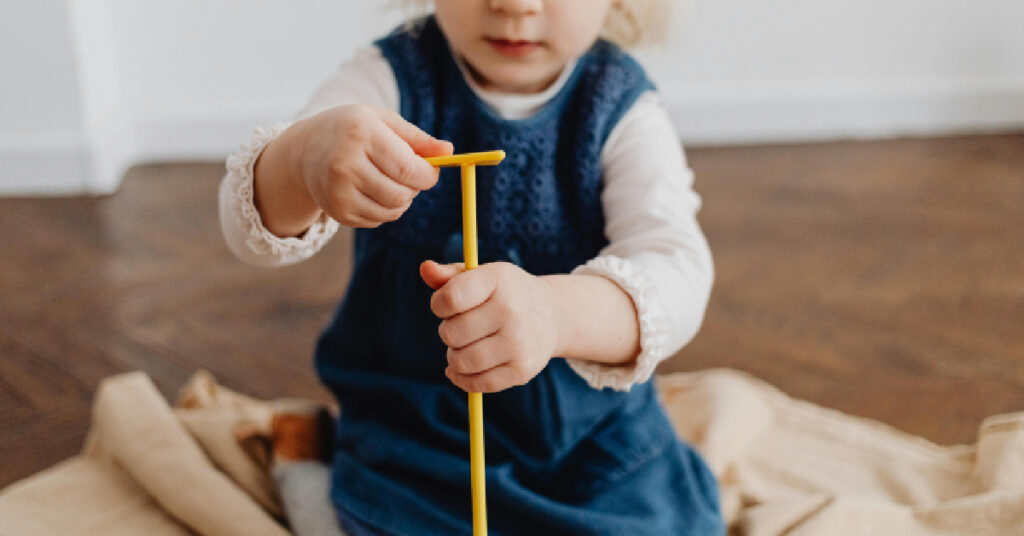
15 Best Toys for Building Independence — That Aren’t Boring or Overhyped
From magnetic tiles to dolls and pretend kitchens, these 15 toddler toys are actually worth the shelf space — and designed to encourage solo play
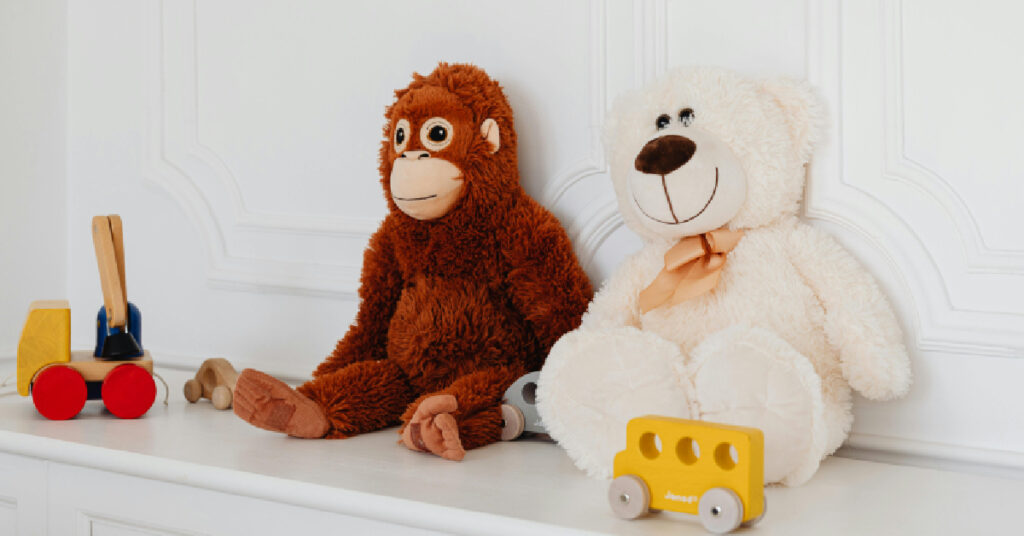
This blog contains affiliate links
If you’ve ever tried to shower, cook dinner, or just breathe for two minutes with a toddler underfoot, you already know — a tiny bit of structure can make a massive difference.
That’s where a toddler play schedule comes in.
And no, it’s not about turning your home into a military camp where playtime runs on a stopwatch. It’s about creating a flexible rhythm — a gentle flow to your day — that gives your toddler a sense of predictability and gives you something even more precious: a moment to yourself.
The truth is, toddlers crave rhythm. Their brains feel safer and calmer when they can predict what comes next. A simple toddler play schedule doesn’t just make your life easier; it builds their confidence, stretches their attention spans, and teaches them how to manage their time (even if “managing time” currently means lining up all the dinosaurs across the couch).
In this guide, we’re ditching the pressure for perfection. I’ll show you how to set up a toddler play schedule that’s realistic, adaptable, and — most importantly — doesn’t break your spirit before 9am.
Ready to feel a little less like you’re herding squirrels? Let’s dive in.
When you first hear “toddler play schedule,” it sounds intense — like you need a stopwatch, 14 Pinterest-worthy activities, and an art degree to survive until lunchtime.
Good news: you don’t.
A toddler play schedule is simply a predictable rhythm that shapes your little one’s day without locking you both into a rigid minute-by-minute plan. It’s about offering clear cues for when it’s time to move, play, rest, snack, create, or recharge — all in a way that feels natural (not forced).
Instead of racing from one activity to another, a good toddler play schedule creates an easygoing flow toddlers can anticipate:
After breakfast, we have outside play.
After lunch, we have quiet time.
After nap, we have free play.
This kind of low-pressure structure helps toddlers:
Feel more secure and less anxious about transitions
Learn how to start entertaining themselves
Build focus and longer attention spans through predictable practice
You don’t need a strict clock — you need a rhythm that helps both of you move through the day without feeling like you’re constantly firefighting.
And the best part? A toddler play schedule doesn’t have to be complicated or perfect to be powerful.
Toddlers aren’t exactly famous for loving transitions.
One minute they’re happily stacking blocks. The next, you announce lunchtime — and it’s like you’ve suggested setting all their toys on fire.
This is where a toddler play schedule quietly works its magic.
Predictability helps toddlers feel safe. It reduces the anxiety that can come with sudden changes and helps them emotionally prepare for what’s coming next. When they know “after morning snack, we go outside,” it removes the element of surprise (and about 70% of potential meltdowns).
Here’s why a toddler play schedule benefits everyone:
It builds independence: They start recognizing “playtime” blocks and initiating activities themselves.
It strengthens emotional regulation: Predictable patterns reduce tantrum triggers and give toddlers a sense of control.
It boosts attention span: Familiar blocks of time encourage deeper, more focused play without constant redirection.
It lowers decision fatigue: No more scrambling for activities every hour.
It gives you breathing space: Independent playtime becomes a regular, guilt-free part of the day.
It creates a rhythm that feels sustainable: Because parenting a toddler isn’t about perfect schedules — it’s about rhythms that leave room for real life.
When done right, a toddler play schedule isn’t about micromanaging their every move. It’s about creating a day that flows — so you’re not constantly putting out fires or feeling like a cruise ship activity director.
A great toddler play schedule isn’t a minute-by-minute military operation. It’s a flexible rhythm that gives your toddler predictability — and gives you space to breathe.
Here’s how to create a simple toddler play schedule without overcomplicating your life:
Instead of planning by the hour (“9:00 am = Play-Doh time!”), use natural daily anchors:
Wake up
Meals
Nap/rest times
Bedtime
Structure play around these moments. Toddlers don’t care if morning outside play happens at 9:20 or 10:05. What matters is the sequence, not the clock.
A toddler play schedule anchored around real-life events feels natural — and it’s far easier to stick to on messy, unpredictable days.
Boredom isn’t a problem to solve — it’s an opportunity.
Building free-play gaps into your toddler play schedule encourages independent thinking, problem-solving, and creative play. Toddlers who learn to move through boredom naturally become better self-entertainers.
Read More: Toddler Boredom Benefits: What Really Happens When You Stop Entertaining Them
Instead of a hyper-planned itinerary, think in flexible categories:
Movement Time: Dancing, playground, obstacle course
Creative Time: Drawing, playdough, painting
Imaginative Play: Dolls, vehicles, pretend cooking
Quiet Time: Books, puzzles, sensory bins
Mix and match based on your toddler’s mood and energy level, but keep the overall flow of your toddler play schedule consistent. This gives enough variety to keep it fun, but enough rhythm to keep it predictable.
Toddlers crash. You crash. Life happens.
Good toddler play schedules aren’t rigid. Build in natural “reset” points like:
Outdoor time after a grumpy morning
Bath time in the afternoon if energy gets wild
A snack-and-story reset after a meltdown
Planning for bumps makes you less stressed when they happen — and trust me, they will happen.
Every toddler is different — but having a rough idea of what a toddler play schedule can look like by age can make your life feel way less chaotic.
Here are realistic, flexible examples based on developmental stages.
(And no, they don’t involve crafting Pinterest-worthy activities at 7am.)
At this age, your toddler’s day is still mostly built around naps and meals. Play sessions are short, simple, and sensory-focused.
Example Rhythm:
Breakfast
Movement Time: crawling obstacle course or playground
Morning snack
Free Play: simple toys like stacking cups, soft blocks, rattles
Nap
Lunch
Sensory Play: water play, scarf peek-a-boo, edible finger painting
Short nap or quiet time
Story Time and Gentle Play: board books, cuddles
Dinner
Wind-down routine
✅ Focus on very short, low-pressure activities inside the toddler play schedule.
Now your toddler can handle slightly longer independent play stretches — and is starting to engage in basic pretend play.
Example Rhythm:
Breakfast
Outdoor Play: park visit, ride-on toys
Morning snack
Creative Time: crayons, stickers, painting with water
Nap
Lunch
Imaginative Play: dolls, small world setups (like a farm or a car city)
Quiet Time: books, puzzles
Dinner
Calm evening activities
✅ At 2 years old, your toddler play schedule should gently introduce more open-ended solo activities.
Three-year-olds crave a little more independence but still need clear rhythms.
Example Rhythm:
Breakfast
Movement Time: scavenger hunt, balance bike ride, dance party
Morning snack
Imaginative Play: dress-ups, puppet shows, building forts
Nap or Rest Time (quiet books if no nap)
Lunch
Creative Time: playdough, sticker collages, sensory bins
Outdoor Play: garden play, water table, backyard adventures
Dinner
Bedtime routine
✅ Your 3-year-old’s toddler play schedule can include larger blocks of independent play, with occasional set-ups or invitations to play.
At this stage, your child is capable of longer focused play periods, storytelling games, and more complex creative setups.
Example Rhythm:
Breakfast
Self-Initiated Free Play: magnetic tiles, small world play
Morning snack
Project Time: art, LEGO, building large block cities
Quiet rest time or independent reading time
Lunch
Outdoor Play: running games, obstacle courses
Loose Parts Play: trays of mixed items to invent with
Dinner
Wind-down storytelling
✅ A four-year-old’s toddler play schedule can have 30–60 minute solo play windows without constant intervention.
Let’s be honest: even the best toddler play schedule is going to hit a few potholes.
Someone’s going to skip a nap, pour yogurt on the cat, or refuse to put on pants for outdoor time.
It’s fine. That’s toddler life. The goal isn’t perfection — it’s predictability most of the time.
Here’s how to actually stick to your toddler play schedule without crying into your third coffee of the day:
Use simple pictures or a DIY chart to show the day’s rhythm.
Toddlers love knowing “what’s next” — and seeing it helps them prepare emotionally for transitions.
Pro tip: You can even set up little “zones” (like a basket for art time, a mat for block building) to make your toddler play schedule more intuitive.
If your toddler wants to spend 45 minutes stacking toy fruit during “movement time” — let them.
The rhythm matters more than sticking to categories.
The whole point of a toddler play schedule is to reduce stress, not add a new way to feel like you’re failing.
Tantrum at snack time? 5am wake-up?
It doesn’t mean your toddler play schedule is broken. It means you’re raising a tiny human.
Reset with a snack, fresh air, or a cuddly book break. Then jump back into the day’s rhythm when you can.
Toddlers read your energy better than they follow your words.
If you calmly roll into “now it’s outside time!” without a full courtroom debate, they’ll eventually trust the transitions too.
Consistency plus calm equals toddler magic.
Here’s the truth nobody tells you when you first start thinking about toddler play schedules:
It’s not about control — it’s about connection.
A flexible, predictable toddler play schedule gives your child the security they crave while giving you enough structure to survive the beautiful madness that is parenting a toddler.
You’re not trying to plan every second.
You’re creating soft guardrails that help your toddler move through their day with confidence (and give you a few blessed moments to breathe).
The best toddler play schedule is one that:
Anchors your day around natural rhythms
Leaves room for messy real life
Encourages independent play without pressure
Helps everyone feel a little more grounded, even on the hard days
So if today’s “outside time” turns into digging a giant mud pit, or “quiet time” means your toddler quietly paints the dog… you’re still winning.
Because you’re building something bigger than a schedule — you’re building resilience, creativity, and a little bit of peace (even if it’s five minutes at a time).
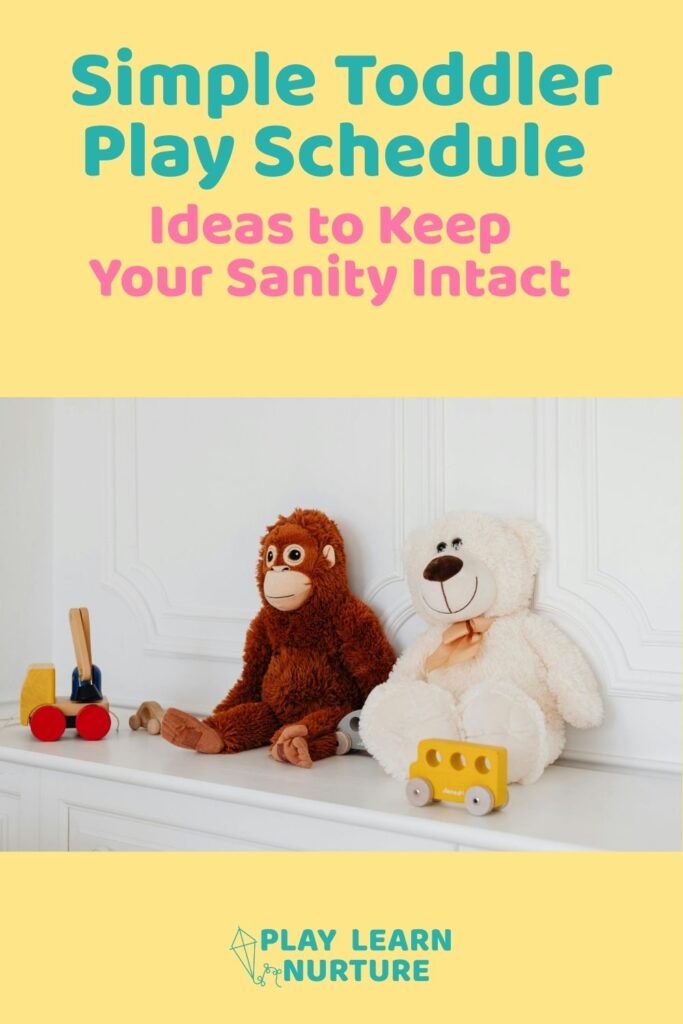
Toddler Independent Play – How to Encourage It plus Open Ended Play
15 Best Toys for Solo Play That Actually Keep Toddlers Busy
15 Indoor Open Ended Play Prompts for Days When You’re Stuck Inside
5 Independent Play Mistakes Parents Make (And How to Fix Them)
How to Start Independent Play and Finally Enjoy 5 Minutes of Peace

From magnetic tiles to dolls and pretend kitchens, these 15 toddler toys are actually worth the shelf space — and designed to encourage solo play
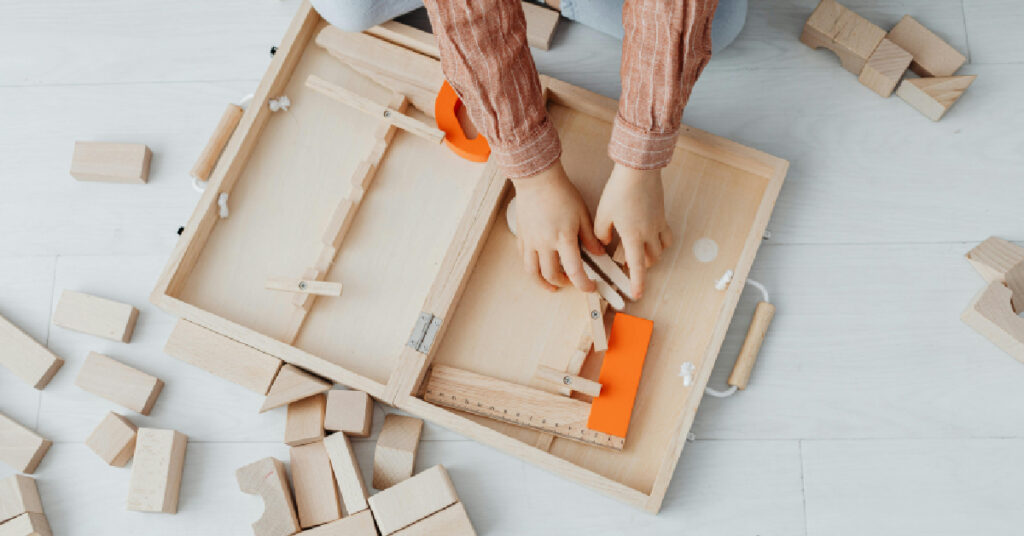
Delve into the world of loose parts play with our selection of toys that inspire exploration and innovation. Perfect for enhancing your toddler’s sensory and
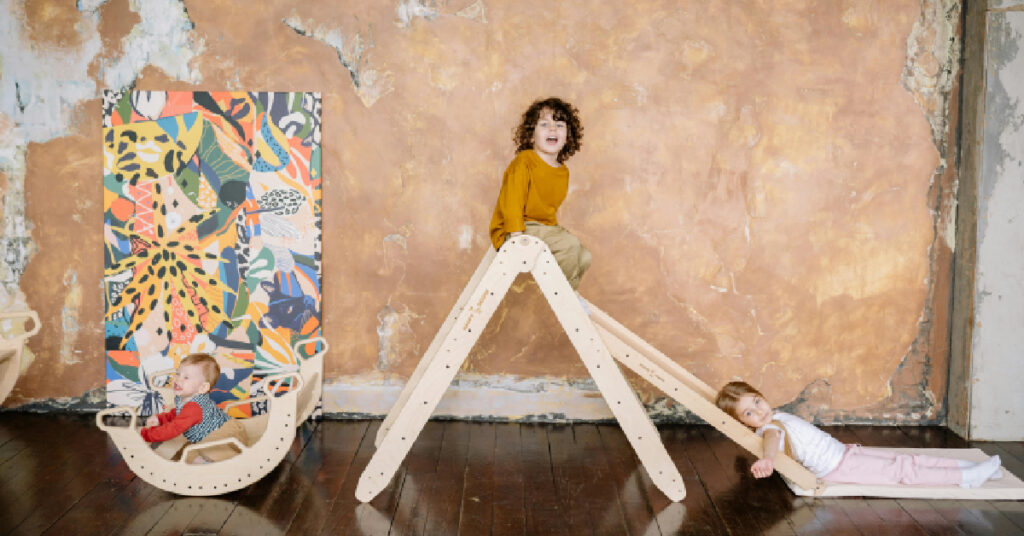
Simple, real-life play space ideas for toddlers that spark imagination, support independence, and give you a moment to breathe — no Pinterest-perfect setup required.

When the milk spills, the toddler tantrums, and your patience snaps before 9AM — you’re not failing. This is one mum’s story of surviving the

Discover how a simple toddler play schedule can create calmer days, boost independent play, and give you back precious breathing space — no strict routines

One chaotic morning, I realised the tension in the house wasn’t just coming from my toddler — it was coming from me. This is the